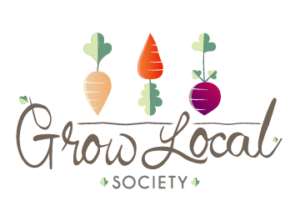Guest Blog by Christiana Miewald.
Christiana has been a board member at the Coquitlam Farmer’s Market for 8 years now and has written this fantastic piece for Sustainable SFU. Here is the link to the original post.
Like the majority of Canadians, you probably think of yourself as food secure. While less than 10% of B.C. residents indicate that they are food insecure, our communities are becoming increasingly vulnerable to food insecurity. While issues of food security are most often focused on vulnerable populations, if we reflect on our own food consumption, it becomes clear that most of our communities are not food secure.
According to the Dieticians of Canada, community food security “exists when all community residents obtain a safe, personally acceptable, nutritious diet through a sustainable food system that maximizes healthy choices, community self-reliance, and equal access for everyone.” While the food you eat may be safe and nutritious, it is also important to ask if it promotes a sustainable food system, community self-reliance and equal access.
A sustainable food system is based on sustainable production and transportation practices. The current industrial food system that provides the illusion of food security through an abundance of meat, fresh fruits and vegetables year-round, is the same system that contributes to climate change. Climate change, in turn, is predicted to have severe effects on agriculture production, resulting in possible food shortages. Droughts, shorter growing seasons and increased prevalence of pests are only some of the factors that are predicted to result in decreased crop yields worldwide.
One way to contribute to both food security and sustainability is to change our consumption habits. The David Susuki Foundation suggests that consumers “vote with their fork” and buy local and organic whenever possible. Buying local and organic food helps the environment and supports regional economies. For example, supporting local farmers helps to ensure that small farms and rural communities remain viable. While it may seem like food is more expensive when we buy organic or from our local farmers – especially when compared to the “cheap” food we can buy at the supermarket – if you think about the extra few cents you pay for local and organic food as aninvestment in your community and in promoting sustainability, it is actually a small price to pay.
Another component to community food security is equal access. Too often food access within communities is uneven, resulting in poorer nutrition and health for those without the economic resources to purchase safe and nutritious food. The fact that “each month, close to 850,000 Canadians are assisted by food banks, and 36.4% of those helped are children and youth” (Food Banks Canada’s 2013 Hunger Count), demonstrates that we do not have equal access to food within our communities. Charitable food programs, such as food banks, are designed to provide short-term relief from hunger, however they have become an entrenched “reality” in many low-income communities.
An alternative to the charitable model is to work toward the “right to food for all”. One organization that has been at the forefront of this movement in British Columbia is the Downtown Eastside Neighborhood House. While the Downtown Eastside neighborhood has high rates of poverty and unemployment, the Neighborhood House strives to create an alternative to food banks and soup kitchens. Their right to food philosophy highlights “the human right of Downtown Eastside residents to secure water and abundant, local, fresh and nutritious food that is available across the neighbourhood and delivered in a dignified manner.” In Belo Horizonte, Brazil, this philosophy has been translated into public policy through programs such as People’s Restaurants and Farm to Consumer market stands. These sites provide affordable produce and meals for all citizens and support local farmers.
In order to ensure all community members enjoy food security, each of us must examine our own food practices. Take a look at where your food comes from and consider what it took to get it to your plate. Where was it produced and by whom? What are the working conditions for laborers who picked that tomato? What farming practices were used to grow that cucumber? How far did those bananas travel? Changing food choices to make them more sustainable is challenging and won’t happen overnight, but making a few small changes may result in gradual shifts toward a more sustainable food system that results in food security for all.
July 3rd, 2014
